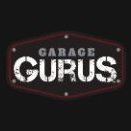-
Welcome to Auto Parts Forum
Whether you are a veteran automotive parts guru or just someone looking for some quick auto parts advice, register today and start a new topic in our forum. Registration is free and you can even sign up with social network platforms such as Facebook, X, and LinkedIn.
Garage Gurus Technical Support Center Grand Openings
-
Similar Topics
-
By Counterman
While constant velocity (CV) joints are the most popular type of driveline joint in use today, universal or “U” joints are still in use on the driveshaft of many larger SUVs, trucks and vans. U-joints can handle a lot of torque, making them popular for these applications, but why did the CV joint rise in popularity? The question can be answered by looking at the operational aspects of a U-joint.
The basics are this: U-joints are located on the ends of a driveshaft, mounted between the driveshaft and a front and rear yoke. The front yoke attaches to the transmission and the rear yoke attaches to rear differential. As the engine moves from the effects of torque and as the suspension of a vehicle travels up and down, the angle of the driveshaft changes.
A U-joint does two things. First, it transfers the motion between the yoke(s) and driveshaft and, second, it does this at different angles, allowing for driveline movement. Here’s where the fun begins. When a yoke and the driveshaft are in perfect alignment, the velocity from one is transferred to the other at the same rate. However, when there is an angle between the two, the velocity of the driven member fluctuates continuously during rotation.
It can be hard to visualize, but the reason this happens is that as the angle of the U-joint changes, the two halves of the U-joint cross are forced to rotate on a different axis. The drive axis remains at a constant velocity, and the ends of the U-joint connected to it rotate in a consistent circular path at the same velocity.
The driven axis, however, rotates in a path which causes the distance of travel at the outer ends of the U-joint cross to increase or decrease in relation to the consistent points of the drive axis.
This effect results in the continuous fluctuation of velocity between the input and output sides of the U-joint. While the input remains at a consistent speed, the output speeds up and slows down as the points of the driven axis continuously alter between a long and short path of travel.
So, why don’t we feel that on a vehicle with a traditional driveshaft? Because there are two U-joints and the fluctuation on each end balances out, effectively allowing the driveshaft to provide a consistent output speed to the rear differential. The angle of the two joints must be the same, however, and it doesn’t take much wear in one for the angles to differ, and subsequently cause a vibration.
U-joints are known for their propensity to cause vibration, and an inherent disadvantage they have is the greater the angle of the U-joint, the greater the fluctuation in velocity. Anything over 30 degrees and the fluctuation dramatically increases.
The driveshaft I’ve described here represents the majority, but U-joints have also been used frequently in the past on the end of the front axles for a 4WD vehicle, and in the rear of independent rear suspension vehicles on the ends of short driveshafts, known as half-shafts. Have you ever noticed how jittery an old 4WD truck feels in the front when the hubs are locked, and you turn a corner? Now that you understand how the fluctuation in velocity of a U-joint changes as the angle increases, you know why.
You may have heard of a Double-Cardan U-joint. It is basically two joints side-by side with a common link-yoke in between. This is one of the original concepts for a true CV joint, and they are often referred to as this. The advantage they have is they offer smoother operation at greater angles, and they are common on 4WD trucks, and a common upgrade for lifted trucks where the driveshaft angle is altered considerably.
The drawback to a Double-Cardan joint is they are bulky, and they can still suffer from limitations due to operating angle. The operating limitations of a U-joint ultimately brought about the popularity of the modern CV joint, but the durability of U-joints means we’ll still be seeing them in certain applications.
The post
link hidden, please login to view appeared first on link hidden, please login to view.
link hidden, please login to view 
-
By Counterman
link hidden, please login to view announced the opening of its new state-of-the-art fulfillment center in Las Vegas, Nevada. This company said the move doubles its footprint in the Las Vegas metro area. The new facility replaces the previous Las Vegas Distribution Center, which had been in operation since 2019. The company said the fully automated center has integrated AI capabilities designed to optimize operations, improve safety, and expand product availability. The integration allows for streamlined processes, reduced operational costs, and enhanced accuracy in order fulfillment.
“This building will serve as our West Coast flagship, housing between 80% to 90% of our product assortment,” said Michael Huffaker,
link hidden, please login to view Chief Operating Officer. “With its advanced technology, it efficiently handles both conveyable and non-conveyable items, enabling faster order fulfillment and shipping.” The new facility is located at 6271 E Azure Ave, Las Vegas, NV 89115.
The post
link hidden, please login to view appeared first on link hidden, please login to view.
link hidden, please login to view




Recommended Posts
Create an account or sign in to comment
You need to be a member in order to leave a comment
Create an account
Sign up for a new account in our community. It's easy!
Register a new accountSign in
Already have an account? Sign in here.
Sign In Now